In the era of monster-length blog posts, I believe there’s still space for books about UX design. Because investing in a valuable book is the kind of gesture that’ll keep you committed and motivated.
The emphasis here is on valuable. I think most of us can agree that many books in our domain are just manicured and inflated blog posts. No wonder we are discouraged from dropping money on them.
In this article, I’ll give you an honest review of 15 books from various product-related fields to help you choose the ones worth your time and money. I’ve sorted them into 4 categories to help you skim:
- General UX/UI books
- UX research and testing
- Design/product lead books
- Product design infotainment
- UX design reference books
1. General UX/UI books
Books about the psychology of user experience and product strategy. Whether you’re an aspiring designer, freelancer, or seasoned professional looking to accelerate your career, I have something for you in this category.
Refactoring UI
Authors: Adam Wathan, Steve Schoger
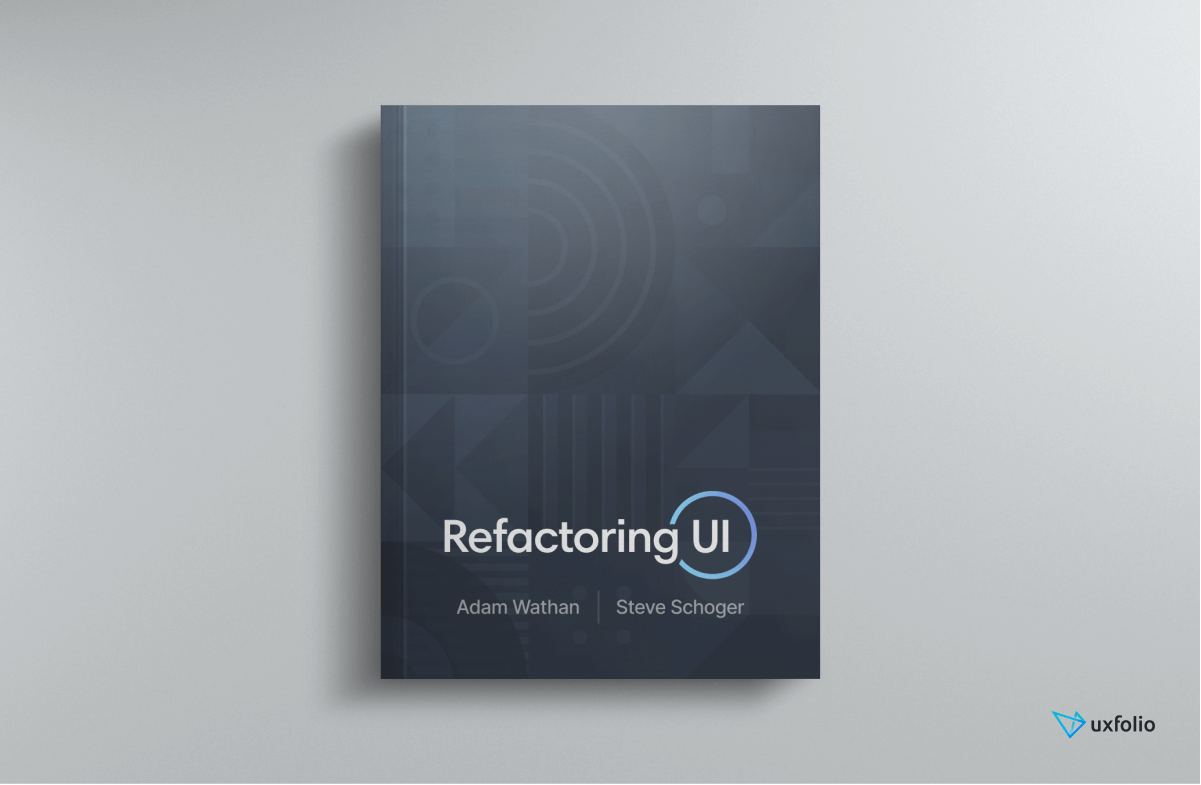
- Highlights: the entire book. No BS, great examples, concise writing
- Recommendation: UX designers who want to be good at UI
“Refactoring UI” is a single-day read, but not because it’s superficial. Quite the opposite.
Wathan and Schoger pack as much information about UX and UI design into 252 pages as possible. They avoid endless buildups and repetition. There’s not even an intro boasting about the authors’ background and achievements. “Refactoring UI” is filled with practical, valuable, and actionable information from the first page.
The structure of the book is on point. The first section provides an overview of the key design principles and ideas. Then, the authors dive into the nitty-gritty of design, using the best examples out of any product design book ever.
The chapters cover every topic on designing UI with UX best practices in mind. That being said, if you’re UX oriented, you will have to support this book with another one about UX principles.
My favorite chapters are the one about hierarchy (“Hierarchy is Everything,” indeed) and the one about Designing Text. But that’s just personal preference. The rest of the book is just as good and informative.
Besides the content, the other reason I am so enthusiastic about “Refactoring UI” is that Wathan and Schoger respected my time. They could’ve inflated this into a 400-page book to make it feel more, as many authors do. Yet, they kept it tight and packed with value.
My only qualm is that this book’s only available in PDF, and it has a hefty $99 price tag. So, before buying, I’d recommend you check out the two free chapters available through the book’s official website. If you like the style and content, you’ll enjoy the rest of the book, so if you can afford it, go for it!
Laws of UX: Design Principles for Persuasive and Ethical Products
Author: Jon Yablonski

- Highlight: 10 clearcut UX laws based on solid references
- Recommendation: UXers interested in relevant psychological concepts
“Laws of UX” provides an in-depth examination of the relationship between psychology and user experience design. Yablonski presents ten principles – or laws – sourced from his behavioral economics studies and his own research into user behavior.
These laws are condensed and snappy descriptions of lingering design concepts, like the peak-end rule, Miller’s law, and Von Restorff Effect. Now, they might sound very fancy, but I found all of them easy to grasp. On top of the 10 laws, Yablonski also explores the ethical considerations we should keep in mind when applying these principles.
Yablonksi gives clear explanations and examples for each law. I didn’t feel like he was wasting my time by repeating the same things. There’s not much fluff in this book, evidenced by its length.
Overall, “Laws of UX” is a well-researched book on psychological concepts in UX. It makes everything easy to understand, and the ideas can be applied immediately.
100 Things Every Designer Needs to Know about People
Author: Susan M. Weinschenk
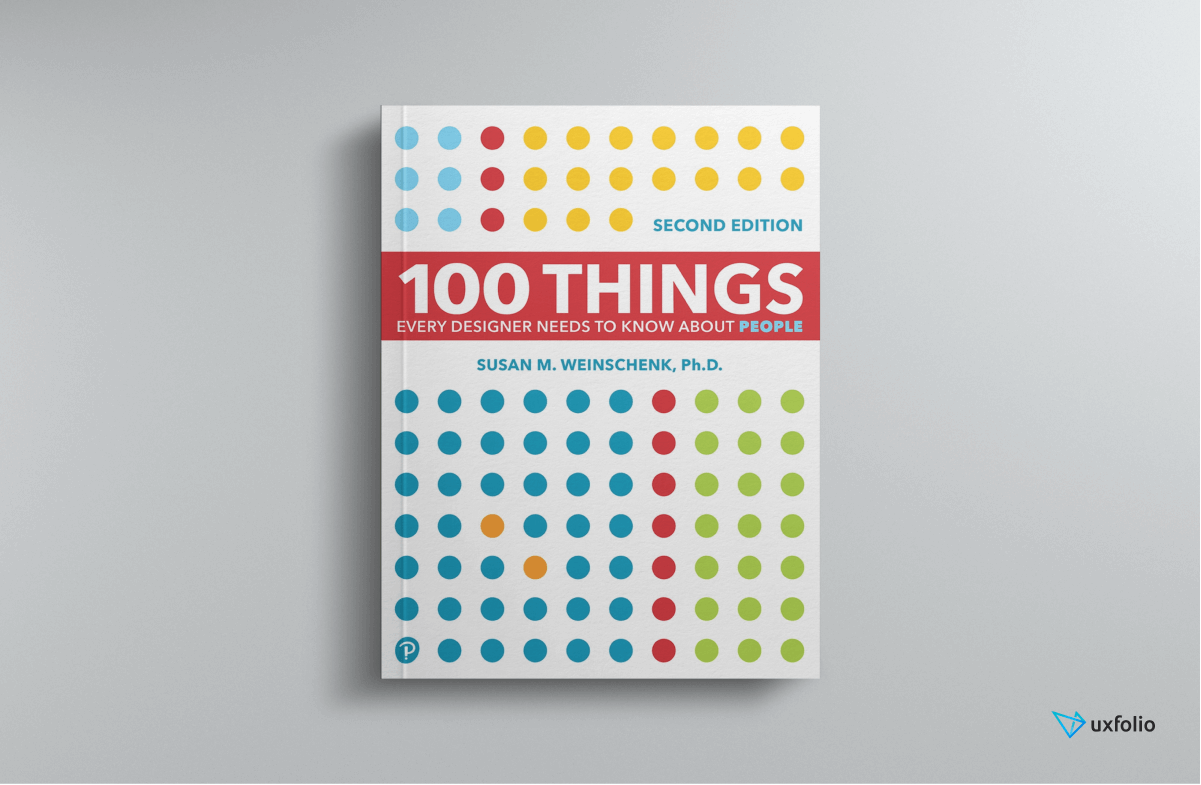
- Highlight: well-supported facts about user behavior presented in a fantastic format
- Recommendation: designers of all levels
This book delivers on the promise in its title. Weinschenk presents 100 facts about user behavior, categorized into clear-cut chapters that explore human behavior.
What sets this book apart from similar books is the practicality of its advice. At the end of each section, a box of takeaways provides concrete, actionable tips for applying the principles discussed in the section.
The writing style and the ideas presented feel accessible. Weinschenk opens each chapter with a story demonstrating the topic and cites numerous studies. This reassured me that I’m consuming serious information and not just the musings of a random designer.
I’d argue that many of the ideas in this book are common sense. Still, the author presents them from a new or insightful perspective that even experienced designers may not have considered. Also, sometimes you just need to hear common sense ideas laid out in an organized fashion to keep them in your awareness.
Overall, “100 Things Every Designer Needs to Know About People” is a valuable resource for designers of all levels, providing practical advice and interesting insights into the design field. I just wish they’d update the visual examples.
Design Is a Job
Author: Mike Monteiro
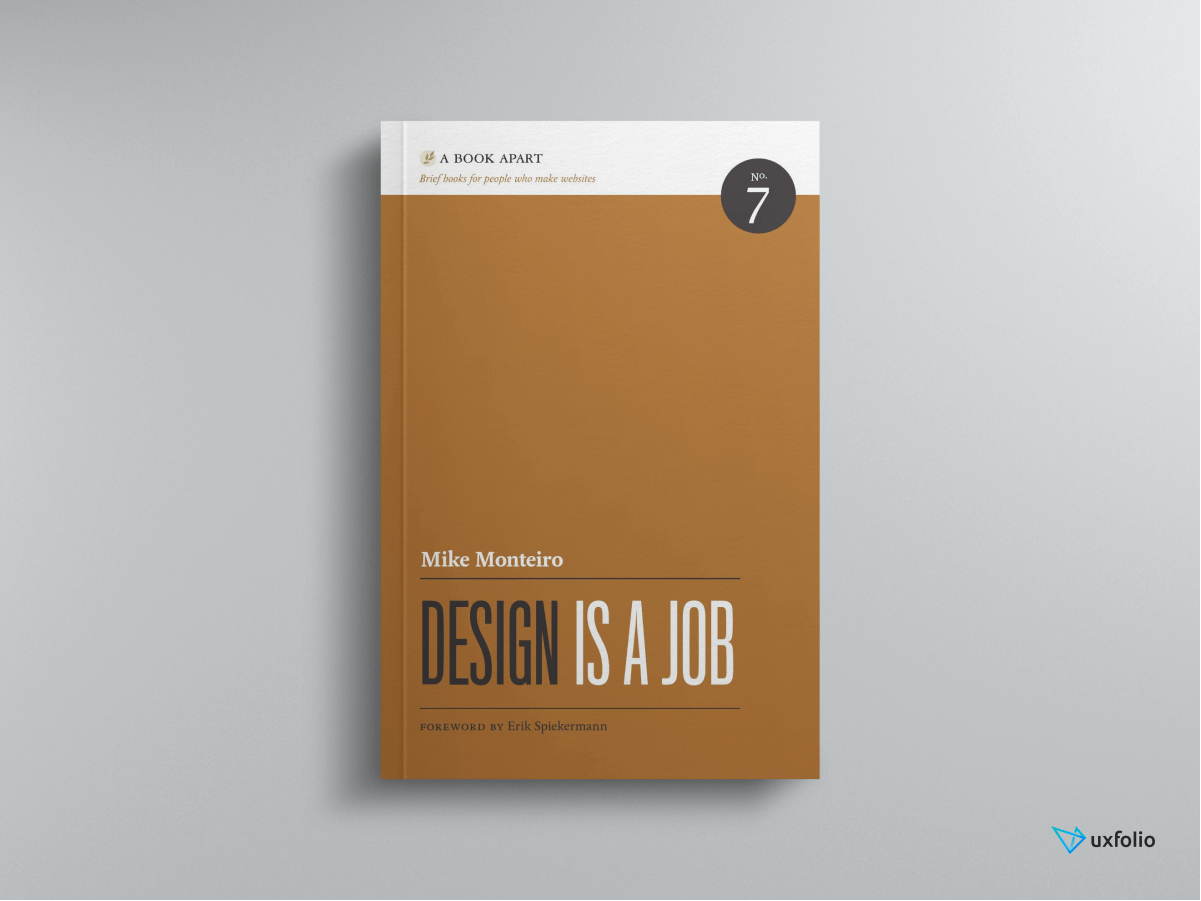
- Highlight: the business of design for freelance and in-house designers
- Recommendation: freelance UX designers
Most people who read this book say they wish they had read it earlier. And I agree. “Design Is a Job” is a very short book in which Monteiro shares advice that other designers or teachers are too afraid to touch on. He talks freely about money, handling clients, and so on.
The book has many autobiographical elements and plenty of laugh-out-loud moments. It’s written in a conversational style with fantastic flow. Combined with shortness, this makes for an easy and fun read.
What many senior designers have over juniors is the confidence that stems from experience. However, this book is like a cheat. Monteiro’s advice will build your confidence in your craft and make you aware of your value as a designer.
I think you should pick this book up. It takes only a few hours to read, but it’ll shape your outlook and serve you throughout your career, especially if you’re a freelance UX designer.
Hooked: How to Build Habit-Forming Products
Author: Nir Eyal
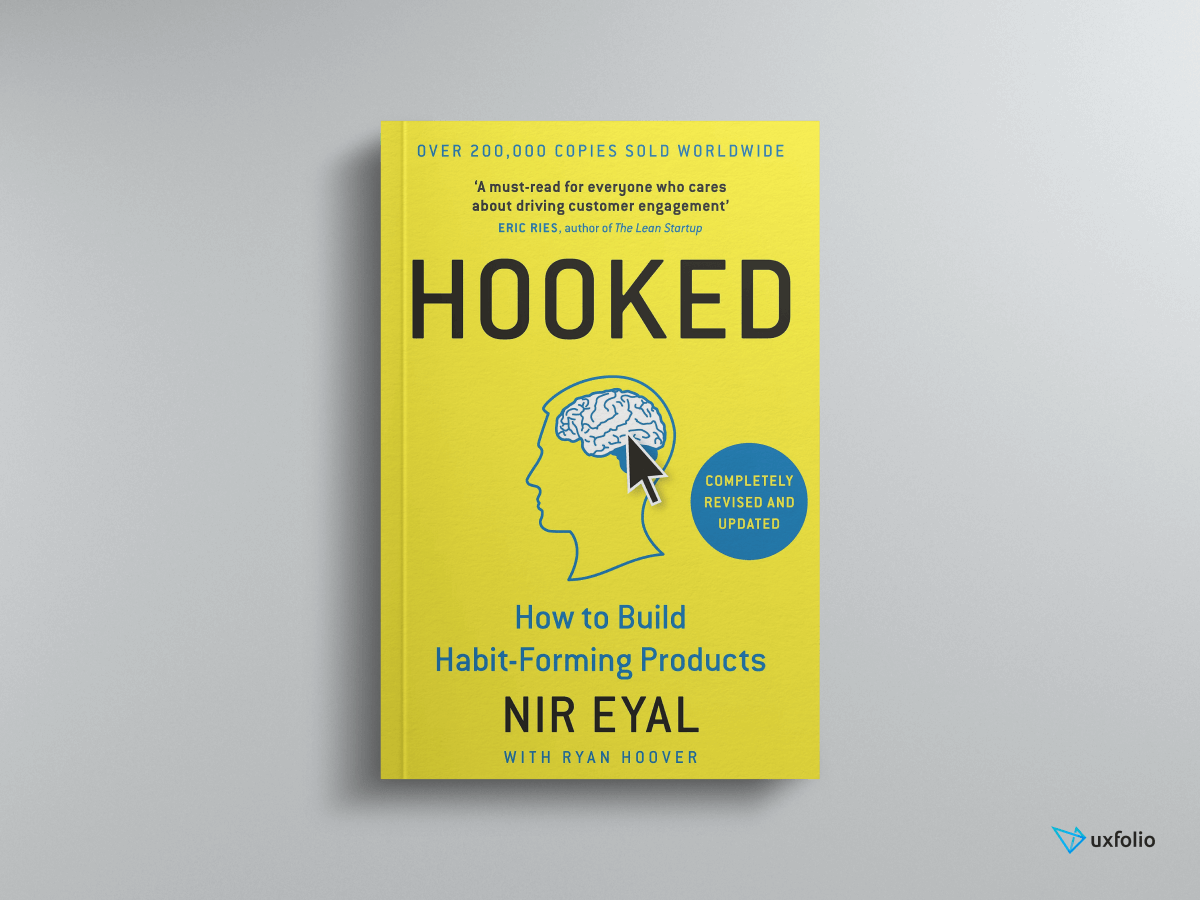
- Highlight: a clean-cut model for building addictive products
- Recommendation: reflecting on your own product or idea
This book highlights the importance of psychology in product design and presents a framework for building products that stick. Eyal calls this the Hook Model. The model has four elements: trigger, action, variable reward, and investment. These elements create a habit cycle that keeps your user engaged and returning for more. Eyal also highlights the importance of evaluation and testing to validate the model’s effectiveness.
In my opinion, this book’s best if you read it while reflecting on a specific product. Preferably a product you’re working on or a product idea you have. Combined with the exercises and examples, this approach makes it easier to internalize the content.
However, the book has two big issues: its length isn’t warranted, and the model cannot be applied to every product. Also, Eyal uses the same examples throughout (Pinterest, Facebook, Instagram, etc.), which gets boring, especially since most belong to the same realm. It would’ve been nice to have a better variety of examples from a more diverse spectrum.
“Hooked” established an understanding of how to build and reinforce habits in certain products. Also, if you’re someone glued to their phone, it’ll make you more mindful of these products’ psychology without being preachy.

2. UX research and testing
This virtual shelf is for full-stack UX professionals and aspiring UX researchers.
Rocket Surgery Made Easy
Author: Steve Krug
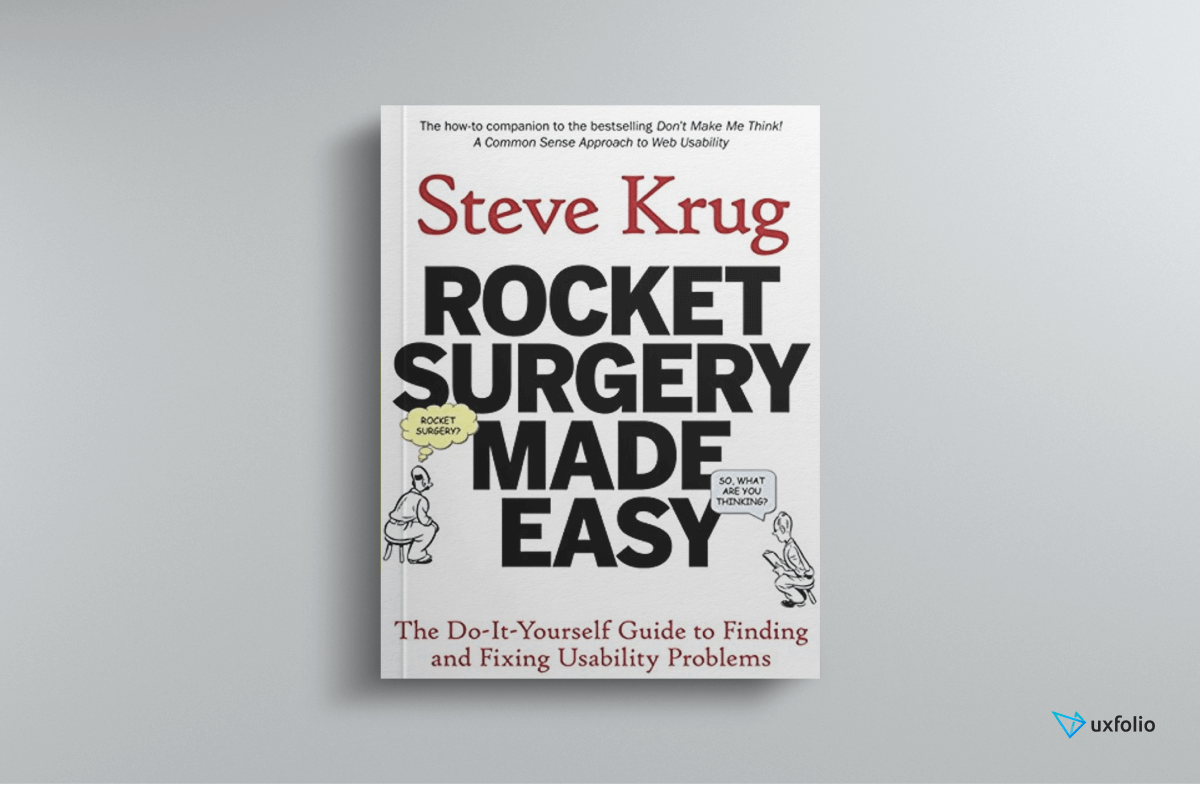
- Highlights: practical information in short-form
- Recommendation: as a refresher or introduction to usability testing
If you’re experienced in usability testing, this book is a good refresher. If you’re just starting out, this book will give you the rundown on the basics. In my opinion, this is one of the easiest reads on this topic, with its 150 pages packed with practical information and tips. And Krug’s straightforward writing style makes it even more digestible.
I think this would make a good reference book for usability testing best practices. Though some of the tips might sound obvious (keep eye contact, get the participant to narrate, do not drop clues, etc.), it has helped me be more conscious of these things while attending tests and conducting interviews.
Also, while reading this book, I realized that many of the standard ceremonies that happen or are said during usability testing are also mentioned. Like the evergreen “we’re testing the product, not you” line. It made me wonder who the source is?
The weak point of “Rocket Surgery Made Easy” is its age. Today, much of the equipment and software recommended in this book has been replaced by usability testing software, like Useberry. Still, it’s a great, compact read on usability testing.
Interviewing Users: How to Uncover Compelling Insights
Author: Steve Portigal
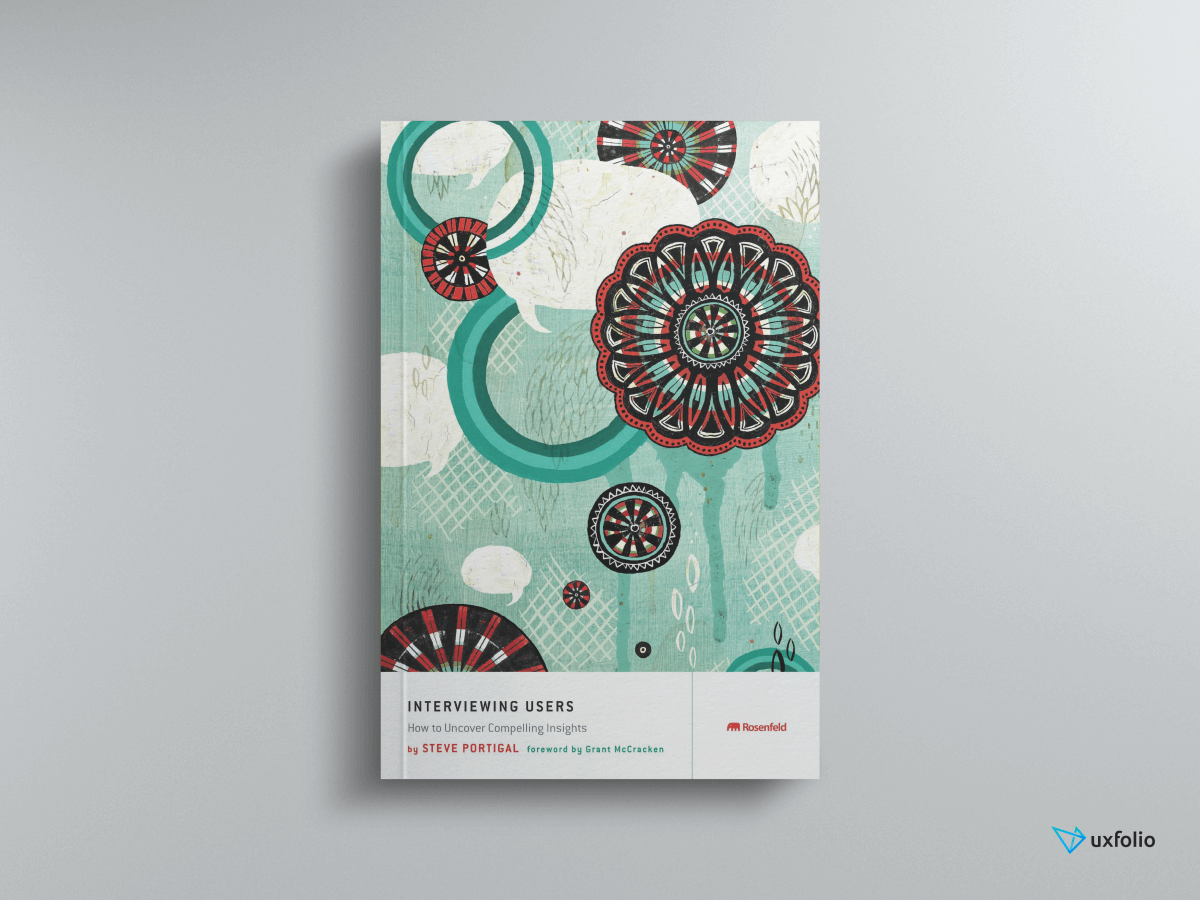
- Highlight: a compact introduction to interviewing users
- Recommendation: UX designers who also do research
I was recommended this book while looking for something comprehensive to prepare for my first interviews. It was almost exactly what I was looking for. “Interviewing Users” gives you a nice overview of the process, from understanding the purpose and preparing to conduct interviews.
Portigal breaks down the process into well-structured, detailed chapters full of examples and helpful tips, like how to deal with difficult interviewees or slow conversations. The only part that’s lacking is data analysis. For that, you’ll need some extra reading.
The anecdotes and case studies in the book helped me see the big picture, providing a better understanding of the challenges I may face during an interview study. The “Interviewing Users” also gives great insider tips, like making a brain dump before interviews to clear your mind of preconceptions and expectations.
Despite the anecdotes, I’m inclined to consider this a reference book, an introduction to user interviews. You’ll find it redundant and boring if you’re a seasoned UX researcher. However, if you’re a designer who has to do interviews, this book is a one-stop and memorable resource.
Don’t Make Me Think, Revisited
Author: Steve Krug
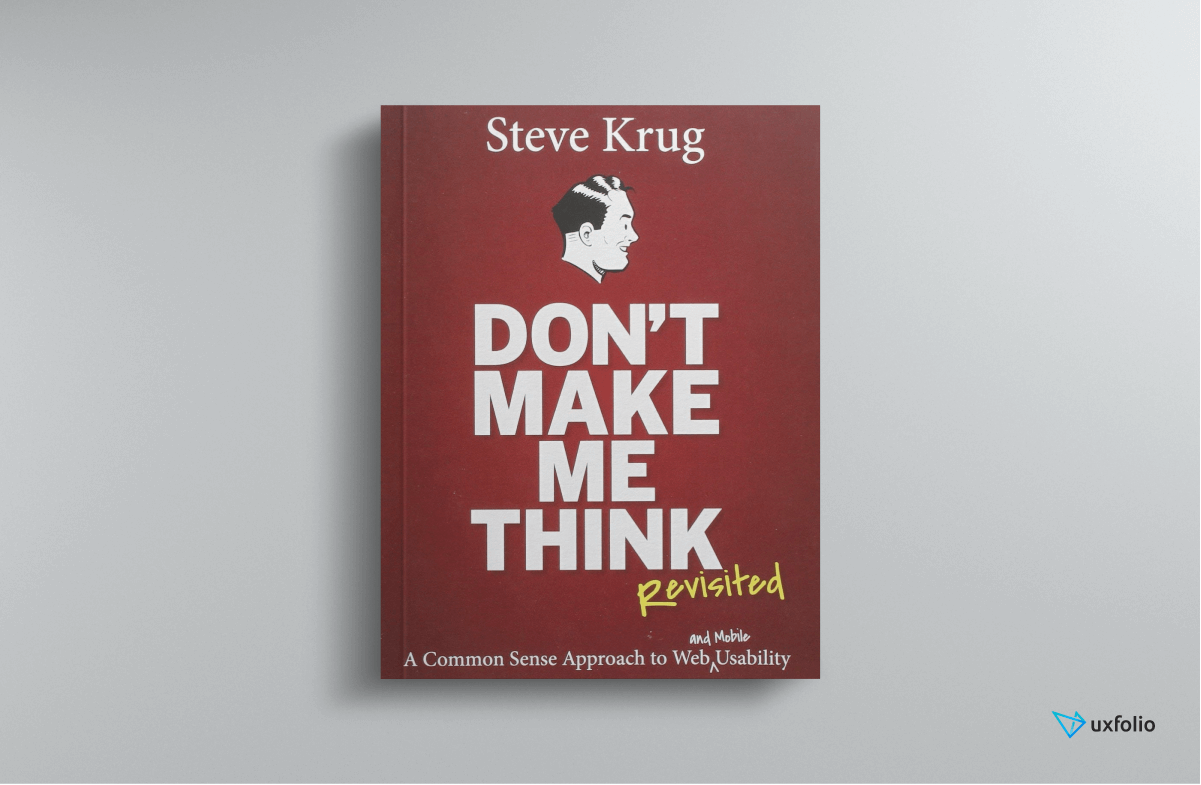
Highlight: a weightless user testing and research framework
Recommendation: everyone working on digital products
I recommend this book to managers, designers, and developers alike, as it provides a common-sense outlook on usability. Krug uses a light and witty tone to communicate his message. Also, he brings plenty of entertaining examples to underline his points.
The book is filled with great advice on important topics like:
- How can every stakeholder contribute to usability?
- How to overcome roadblocks when opinions differ?
- How to eliminate excuses for disregarding usability testing.
I like that Krug keeps it real throughout the entire book. He states facts that many professionals refuse to acknowledge. For example, that nobody reads the copy of a web page in real life, nor do they spend too much time reviewing its building blocks.
This is a highly recommended read. And, if you’re looking to expand your horizon, check out the footnotes for further readings.
3. Design/product lead books
This shelf is for you if you’re a senior designer looking to accelerate your career or a junior designer who wants to know more about how product design teams work.
Continuous Discovery Habits
Author: Theresa Torres

- Highlight: the most compact book about modern teams
- Recommendation: UX designers looking to advance their careers
Since user needs and desires are malleable, products need to adapt continuously. This book provides a great approach to prioritizing your users in a sensible fashion. If you’ve been working at a modern product company, you won’t find this book ground-breaking. However, I found it to be an extremely valuable read since it gives structure to lingering ideas and reinforces them. Consequently, it’ll make your efforts more focused and organized.
The book’s main idea is to keep in touch with your customer by building a regular interviewing practice. Torres gives actionable ideas on how you can achieve this. Then, you get a nice rundown on how this and other discovery processes should be interpreted, processed, applied, and evaluated.
I found “Continuous Discovery Habits” a smooth read since Torres doesn’t take unnecessary detours. The book doesn’t pretend to be something radical, either. It’s just tightly packed with relevant ideas and actionable tips.
Whether you’re looking for your first product design job or to accelerate your career into a more senior role, this book has something for you. Not because it’s revolutionary but because it presents solid knowledge without pretension.
Inspired: How to Create Tech Products Customers Love
Author: Marty Cagan
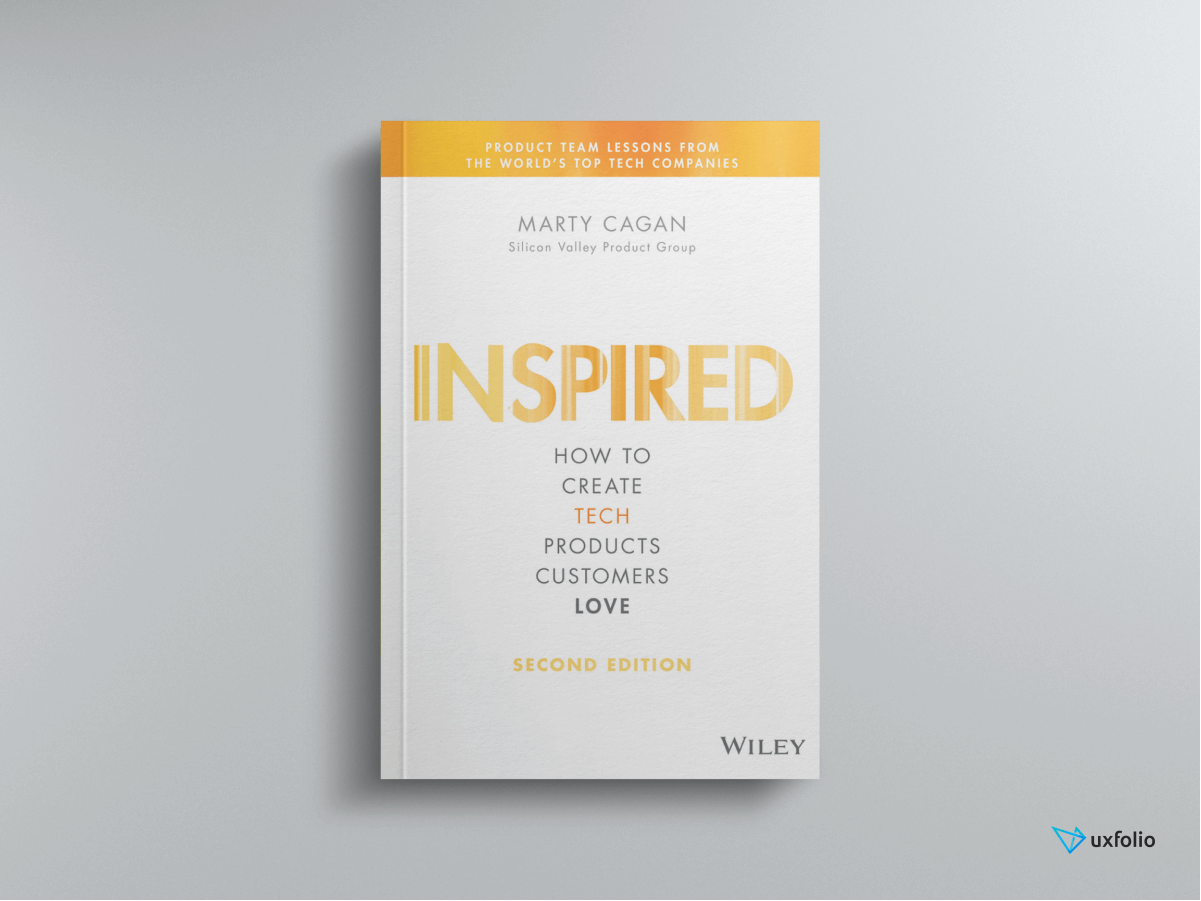
- Highlight: lots of easy-to-digest lists
- Recommendation: designers aspiring to become product managers
“Inspired” by Marty Cagan is catering to product managers, but product designers can also learn from it, thanks to information about various product risks, discovery, and other techniques. This was a light read for me, but that could be because I have no desire to become a product manager, so I wasn’t really invested.
To Cagan’s credit, Inspired is well-structured, with 67 micro-chapters. I appreciated the heavy-handed use of lists because they make everything easier to grasp. It’s possible to read this book in one sitting, but you can also spread it out through a few days, especially if you take notes.
As for its content, “Inspired” is an overview of the product manager’s job with sound advice on how to be good at it. Unfortunately, Cagan starts with the usual – and at this point, extremely boring – examples. I wonder how hard it would be to collect stories from smaller-scale companies and individuals for some diversity in these books. As a content creator, I love Google, but I don’t need to read about them in every book of this genre.
Thankfully, the book picks up with good advice on building and scaling product teams, product strategy and vision, discovery, and transformation techniques. I found the two chapters about the loss of innovation and velocity most revealing, followed by the chapters about roadmaps and objectives.
This book is like a summary of hundreds of blog posts about various topics related to product management. The good news is that reading this book will save you from scouring the internet for reliable articles on these topics. Though at points I found it a bit too wordy, I think it’ll be inspiring to practicing and aspiring product managers alike.
Sprint: How to Solve Big Problems and Test New Ideas in Just Five Days
Authors: Jake Knapp, John Zeratsky, Brad Kowitz
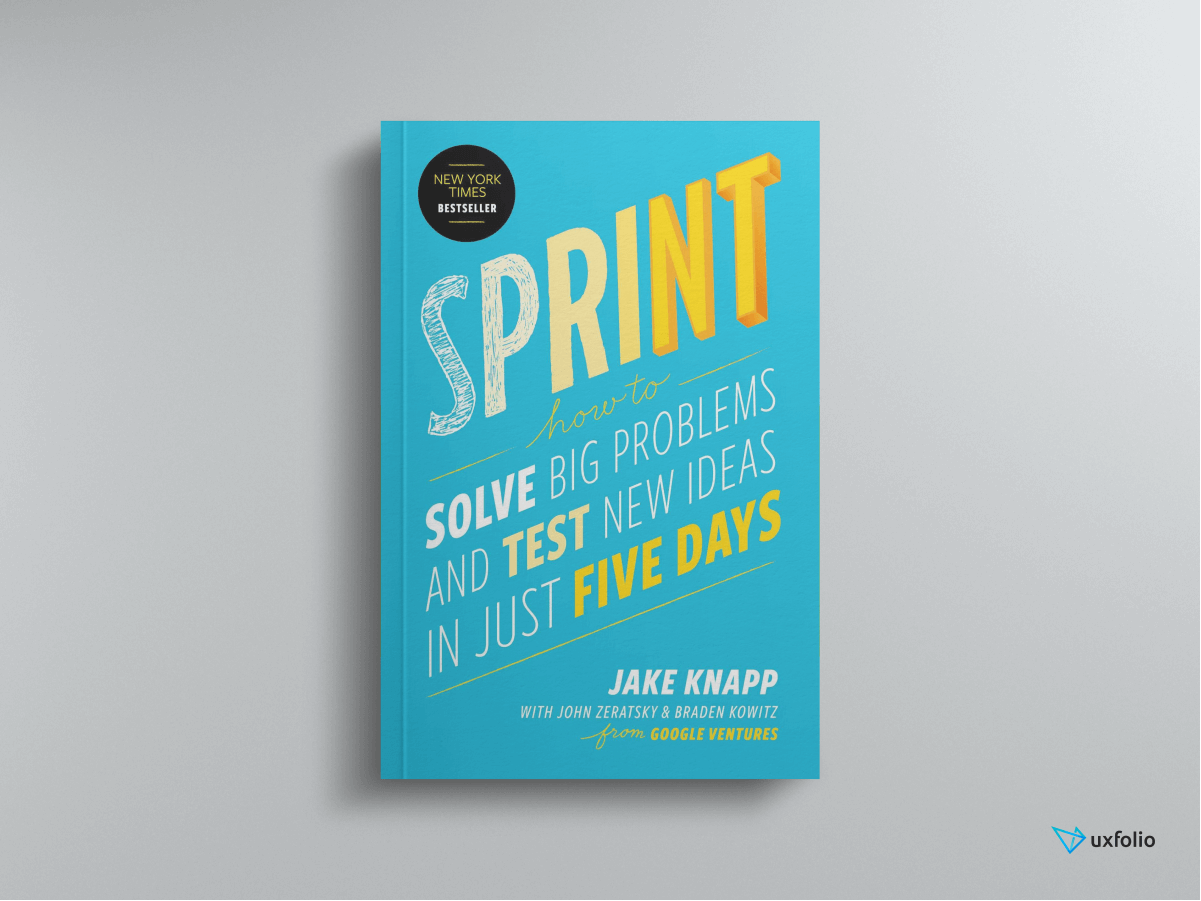
- Highlight: a complete introduction to a popular workshop method
- Recommendation: add it to your resume
Jake Knapp’s book on design sprints is a staple on every design company’s bookshelf. Including ours. Since this book has been available for a while, I think most people already know or at least heard about its contents. So, it won’t sound as revolutionary to anyone anymore:
The Sprint is an intensive, five-day workshop method that can be applied to develop new ideas and solve product-related roadblocks using various techniques, like storyboarding and prototyping. The focus is on being productive and making decisions.
Even if you already read about it in Medium articles, “Sprint” is a worthwhile read, especially if you’re an aspiring design lead or new to the startup environment.
Let’s be honest: many companies and teams will never do 5-day sprints. Whether that’s good or not is not for us to judge. But, even if you know that your company will never do one, some of the key concepts in this book can be applied to your own ideation sessions, goal setting, and even regular meetings, like rapid sketching, time-boxing, deep focus, and so on.
The biggest problem with this book is that it could be much-MUCH shorter. Otherwise, it’s still relevant and a staple in the product design community.
4. Product design infotainment
For those of you who want something UX-related for entertainment.
User Friendly: How the Hidden Rules of Design Are Changing the Way We Live, Work, and Play
Authors: Cliff Kuang, Robert Fabricant
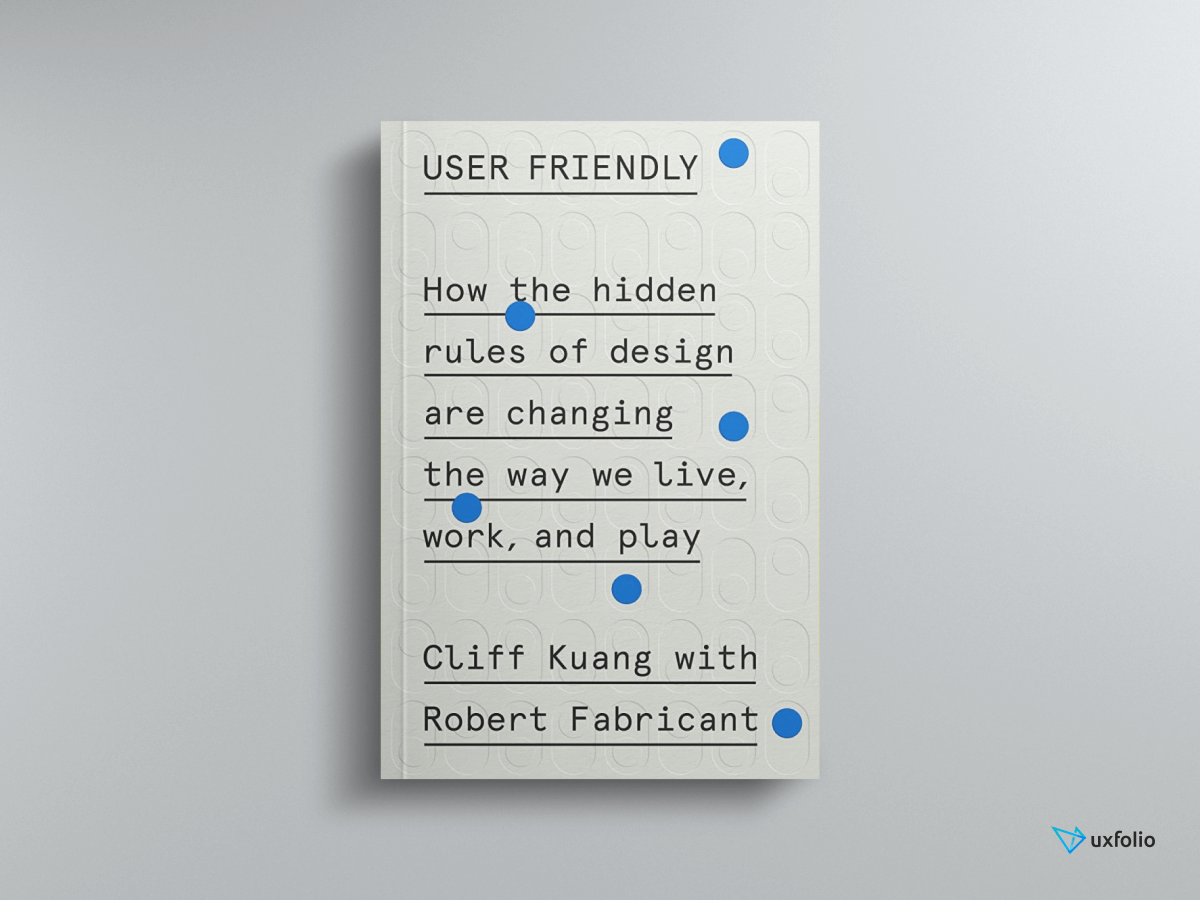
- Highlights: the history of UX design in infotainment format
- Recommendation: any designer and non-designer
In “User Friendly”, Kuang and Fabricant set out to cover the evolution of user-friendliness and its impact on our lives. I find that this book serves two purposes. The first is to tell the history of user-friendliness in a serious yet engaging fashion. The second is to enrich and deepen our thinking about design. So, this is not a how-to book about skills and UX processes.
I was particularly astounded by how the user-friendliness of equipment came to prominence only recently and how technology is becoming simpler and simpler until it becomes invisible. Also, the authors make many revelations about the influence of industrial design on interface design, which is a perspective that’s usually not highlighted much.
There are a few points where the book becomes a bit preachy, especially around the discussions of social media and tech companies. Otherwise, this is an easy and short read from the infotainment genre. However, “User Friendly” is not a must-read by any means. Still, like practitioners of various artistic fields, I believe UX designers can also learn a lot from their history.
The Design of Everyday Things
Author: Don Norman
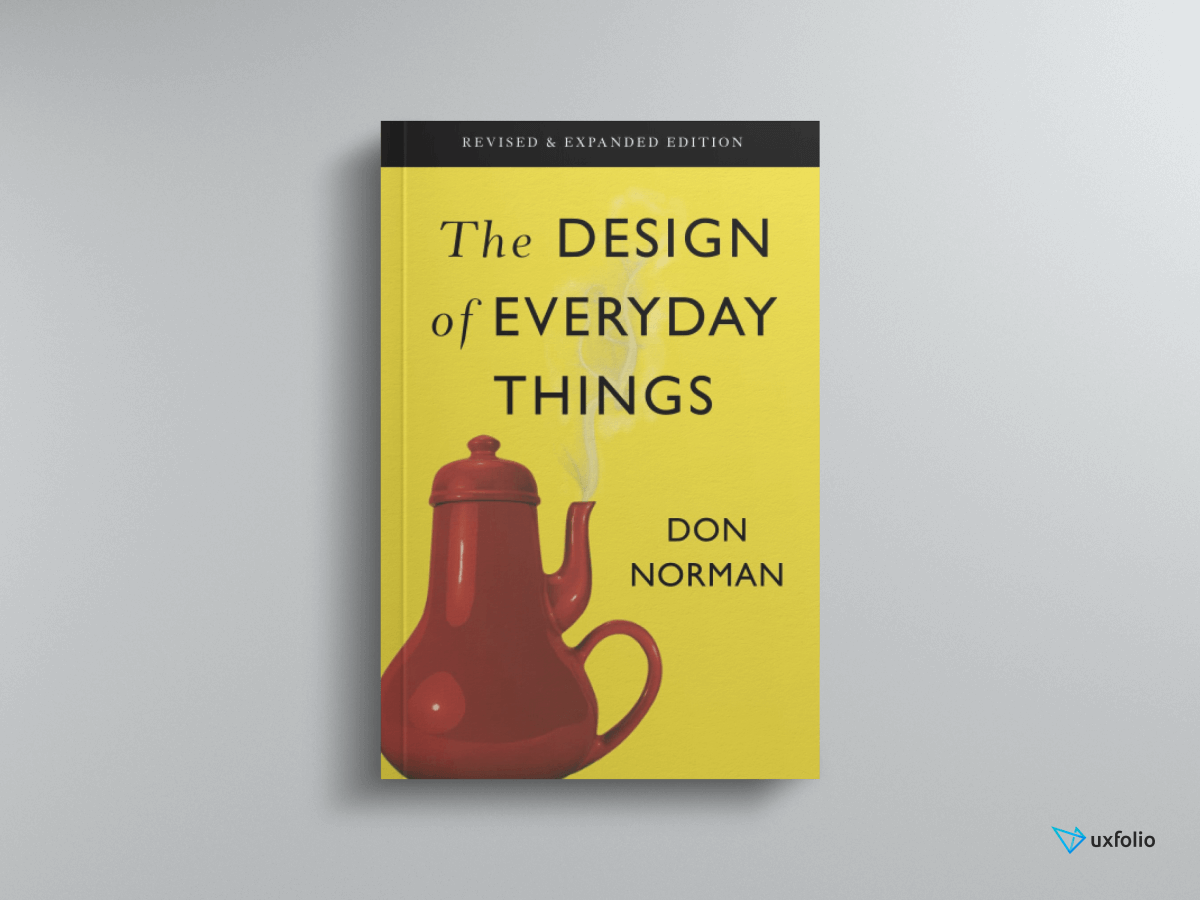
- Highlight: shaping your outlook as a designer
- Recommendation: keep your creative energy flowing
Though I read it years ago, I still remember a great deal of “The Design of Everyday Things.” This book reveals the creative problem-solving and inventiveness behind the most (seemingly) simple objects, like doors, stoves, and answering machines. I think this book is a champion in the infotainment category.
Norman takes a deep dive into various aspects of design, such as ergonomics, psychology, and research, showing how these disciplines intertwine to create an aesthetically pleasing product that is intuitive and popular with the masses.
The book also looks at the potential of Big Data and AI to shake up product design. It is an eye-opening read that made me take a second look at the things I use daily and appreciate the effort that went into designing them.
Whether you’re a designer or not, this book is a great way to gain a new understanding and appreciation for the design of everyday objects.
5. UX design reference books
Use these books to build your professional vocabulary and your understanding of the product design process.
Designing Interfaces
Author: Jennifer Tidwell

- Highlights: the one-stop shop for UX/UI terminology
- Recommendation: aspiring UX/UI designers
“Designing Interfaces” is a reference book on UX/UI design. In around 500 pages, Tidwell does a great job of explaining common product design patterns and design terminology.
Though written in 2005, I found that most principles in this book are relevant to this day. Also, Tidwell uses plenty of example screenshots to make her points more comprehensible. Just be prepared that some of the screenshots are a real throwback.
I skimmed this book but based on my impressions, it’s a concise overview of all important UX concepts. You’ll learn about things like midstream changes, deferred choices, satisficing, incremental construction, microbreaks, spatial memory, and so on. The biggest benefit of reading this book is that it will help you communicate more professionally.
The Elements of User Experience
Author: Jesse James
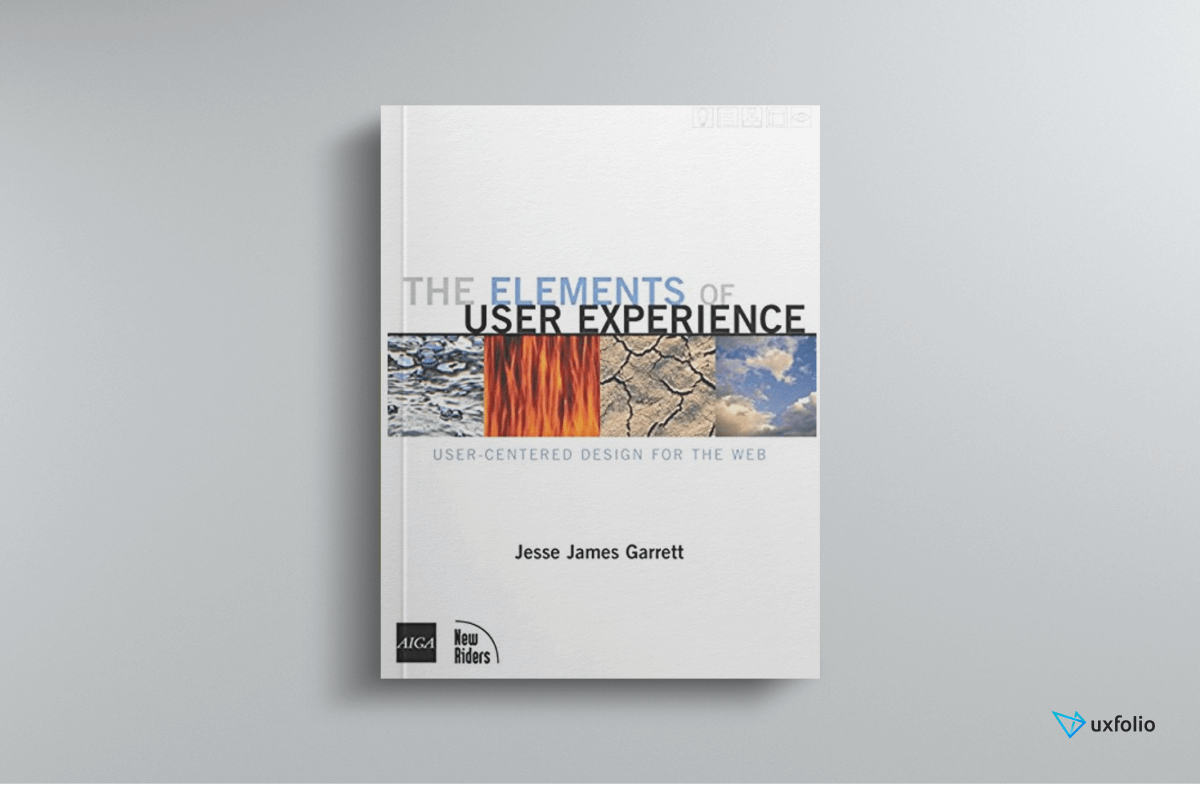
Highlight: a simplified, 5-plane framework to UX design
Recommendation: as an introduction to product design and strategy
James takes a holistic approach to user experience in this book and builds a vocabulary of the elements involved. His approach is based on 5 planes:
- Strategy,
- Scope,
- Structure,
- Skeleton, and
- Surface.
These planes cover both the abstract and concrete aspects of user experience design. They also illustrate how a UX project is structured. Each plane is based on the decisions made on the plane below while influencing the planes above.
I like that James explains why bad web design is bad and offers an approach to creating user-friendly websites. Just keep in mind that this is not a how-to book. It’ll give you the perspective and insights to figure things out on your own.
“The Elements of User Experience” also covers the general terminology of UX design and the relationship between different terms. So, this book can be a handy reference to keep at your desk. Not life-changing, just solid.
How to advance your career with UX design books?
It’s a common struggle for UX designers to fill the About page of their portfolio with adequate content. This is where your reading list will come in handy. I suggest you write three 4-5 sentence reviews about your favorite UX-related books. This will signal to design leads that you invest time and effort into your craft. Here’s a great structure to include your product design reading list in your portfolio.
- Author’s name
- Title
- Review:
- Why did you pick up this book?
- Was it a recommendation? Who recommended it and why?
- Did you read about it elsewhere? Why did it catch your attention?
- In what way was this book impactful?
- Did you learn something new? What?
- Did it widen your perspective? In what way?
- Did it boost your skills? Which skills and how?
- How did you apply what you’ve learned?
- Has it changed your design process? In what way?
- Has it contributed to any of your projects? How?
- Why did you pick up this book?
Answer 3-4 of these questions, and you’ll have an engaging book section on your About page. If you don’t want to spend hours on designing your about page, try the best UX portfolio builder: UXfolio. With UXfolio’s stunning templates, you won’t procrastinate with pixel pushing, so you can focus on what really matters in a portfolio, which is content.